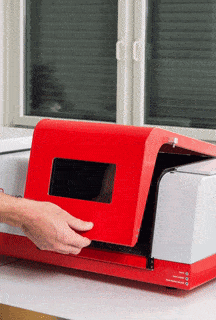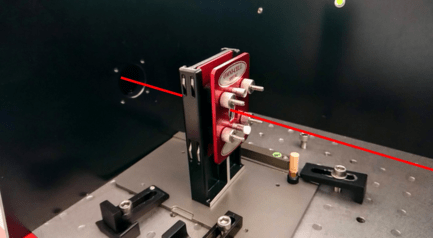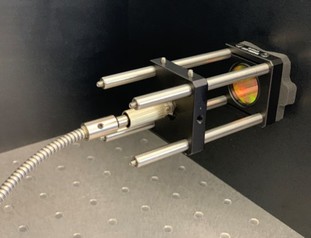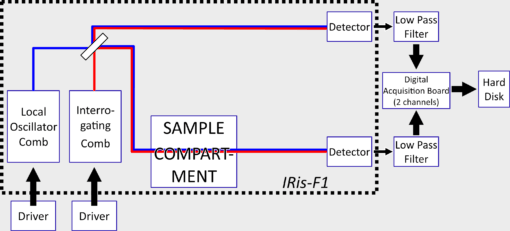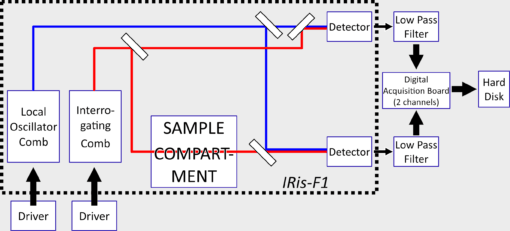The IRis-F1 – fast, high-resolution spectrometer
Does Fourier-Transform Infrared (FTIR) spectroscopy limit your measurement capabilities in terms of speed, signal-to-noise ratio or spectral resolution?
The IRis-F1 spectrometer overcomes these limitations and offers an unmatched combination of speed, brightness and resolution. A complete spectrum can be acquired in one microsecond and the high brightness laser source enables high signal-to-noise ratios >1000 in 100 microseconds measurement time. These parameters are achieved with a default spectral resolution of 0.25 cm-1 to 0.5 cm-1.
Spectral and temporal resolution are recorded simultaneously, avoiding massive experiment repetition as sometimes required in step-scan FTIR. A high-resolution version, offering <0.001 cm-1 spectral resolution, is also available.
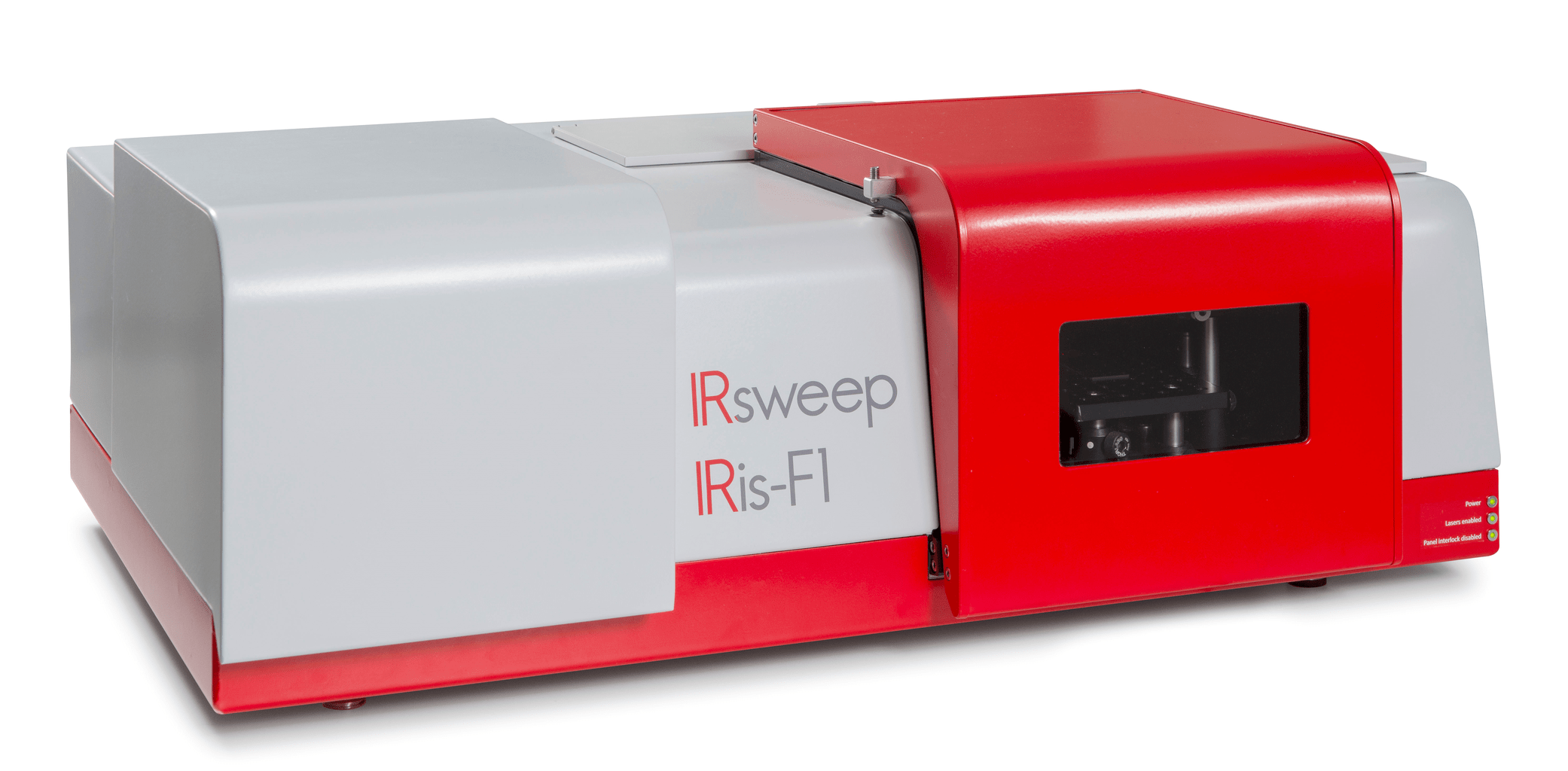
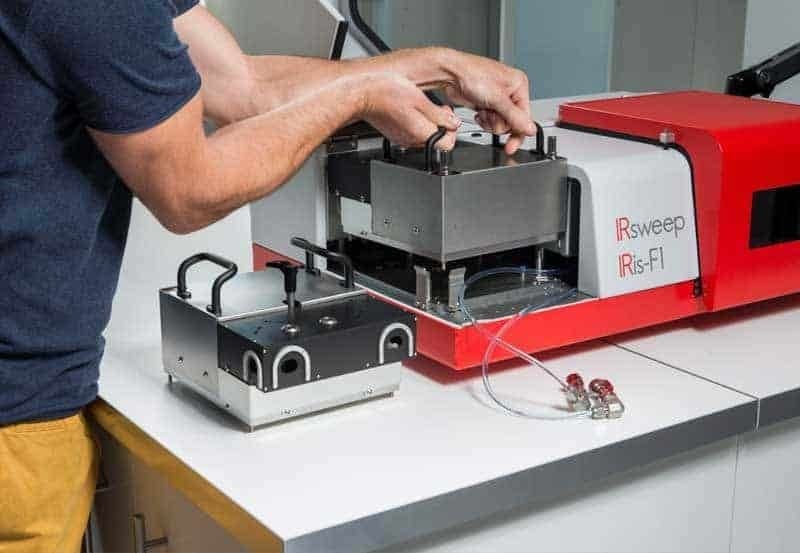
Easy laser module exchange is done within a few seconds, allowing you to cover several bandwidths with 60cm⁻¹ broadness
The dual-comb light sources are packed into laser modules which are user exchangeable without tools and with minimum realignment. Modules are available with different center wavenumbers throughout the mid-IR and typically cover >60 cm-1.
The sample compartment is large and versatile, allowing coupling of most existing accessories such as ATR units, transmission cells and reflection setups. The beam can also be extracted to couple to external experiments.
The IRis-F1 is based on quantum cascade laser frequency combs, which are broadband mode-locked mid-IR lasers. Spectral resolution is generated by the dual-comb technique, where one comb acts as a dispersive element for the other. The resulting interferogram is typically recorded in less than a microsecond.
What our customers say about IRis-F1
QCL frequency combs has led to a paradigm change in TRVS IR spectroscopy. Now microsecond reaction monitoring becomes possible in the MID-IR.
Dr. Ian J. Burgess, University of Saskatchewan, Canada
Professor in the Chemistry Department
This combination of features of IRis-F1 is very useful in high temperature gas dynamics applications and we plan to continue to exploit this technique in our laboratory for both kinetics studies of new species and other novel diagnostic applications.
Dr. Christopher Strand of Prof. Ron Hanson’s Lab, Stanford University, California
Senior Research Engineer in the Department of Mechanical Engineering
IRis-F1 Benefits
High Speed
Time resolution below 1 microsecond and signal-to-noise ratios above 1000 within 100 microseconds enable analysis of fast processes with high signal quality.
The simultaneous acquisition of spectral and temporal resolution makes massive experiment repetition obsolete in many cases.
High Brightness
The laser frequency comb source offers higher brightness than conventional globar-based systems, which enables analysis of strongly absorbing samples and permits shorter integration times.
In typical applications, the measurement time is regularly reduced by 100 times.
High Bandwidth
Several hundred laser modes are typically spread over more than 60 cm-1 within a single laser module.
Laser modules can be exchanged to change the center wavenumber in the mid-infrared range from 4.5 µm (2200 cm-1) to 10 µm (1000cm-1), where many fundamental ro-vibrational absorptions are located.
See all the Configurations of the IRis-F1

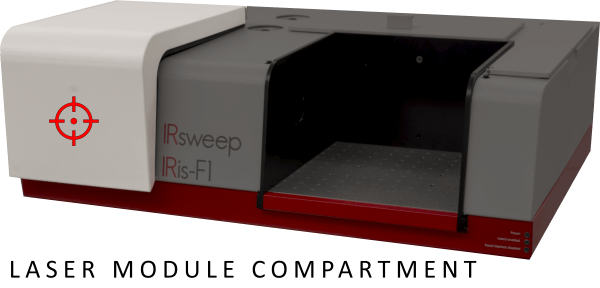
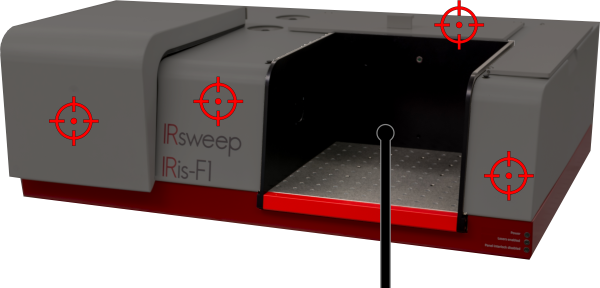
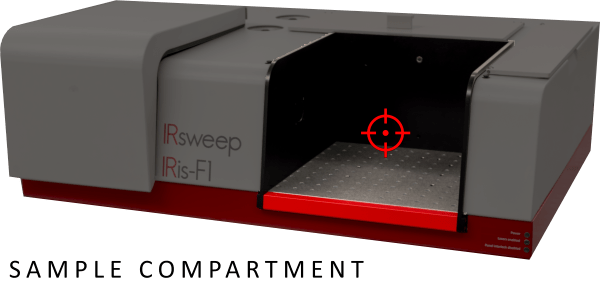
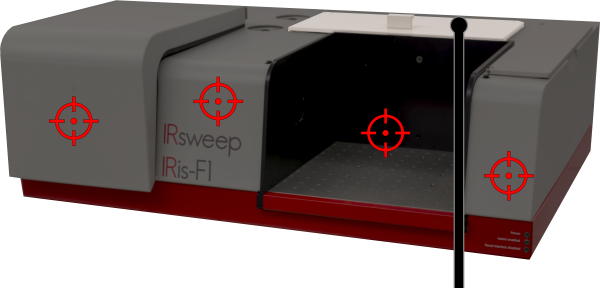
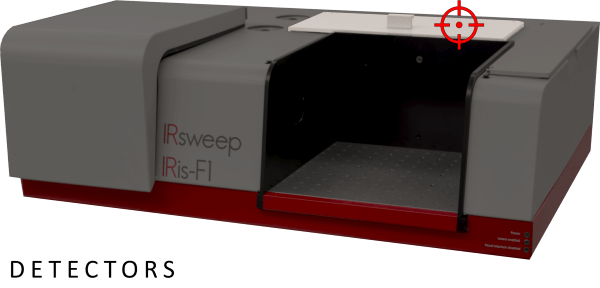
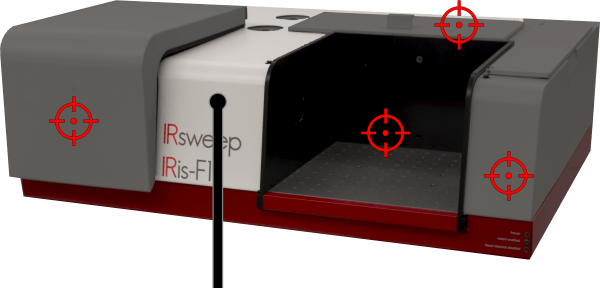
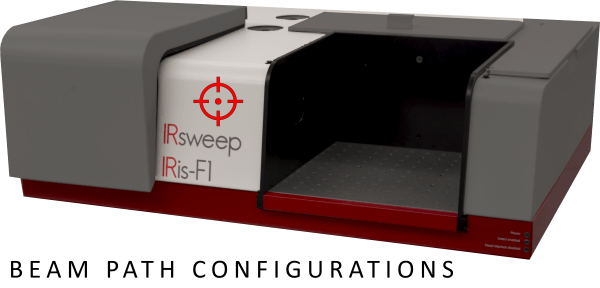
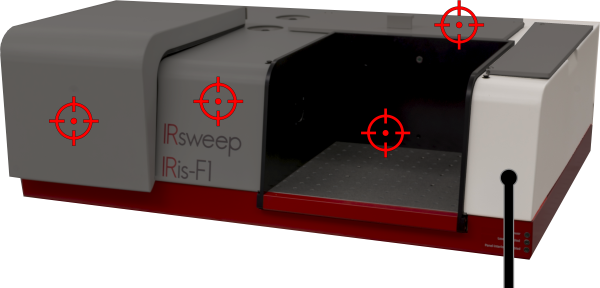

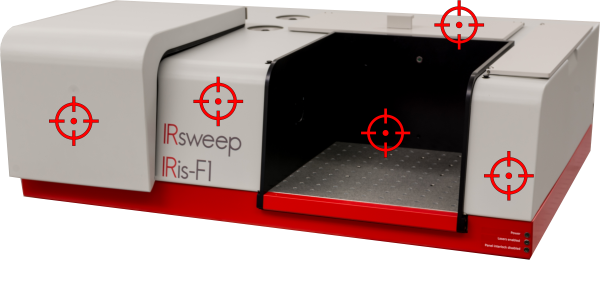
Select the highlighted elements above for more information about the IRis-F1 and its components.
Laser module compartment
The laser module compartment holds the key component of each IRis-F1: the dual-comb laser module. Each module contains two pre-aligned frequency combs that typically cover a spectral range of about 60 cm-1. The center wavenumber is chosen to suit the application. For protein studies, for instance, the amide I band is often chosen.
To switch from one spectral band to another, additional laser modules can be purchased and exchanged by the user without any tools. The modules come pre-aligned to a degree that only a simple signal-maximization procedure that takes less than 5 minutes is required. No detector exchange is required when switching between laser modules.
After the module exchange, the system is ready to operate after a thermalization period of about 30 minutes.
Sample compartment
The sample compartment of the IRis-F1 is large, measuring 270 x 270 mm width and depth, and 170 mm in height and the array of M6 threaded holes allow for large flexibility in terms of sample interface and usable accessories.
The beam height of 85 mm above the bottom plane is also compatible with most existing accessories and the beam goes through the sample compartment from left to right. A red laser beam is co-aligned with the IR beam to simplify alignment.
Typical configurations are:
ATR measurements
The system has been used with a number of ATR accessories including Specac Golden Gate, Silicon and ZnSe- based multipass ATR crystals and Irubis single pass disposable ATR chips.
Due to the high brightness of the laser source, a higher number of ATR bounces can be tolerated, increasing the signal-to-noise ratio.
Read more: Monitoring rapid curing reactions with the IRis-F1
Transmission measurements
Transmission cells can be readily inserted into the beam path.
The high laser power makes it possible to measure significantly thicker samples than in FT-IR spectrometers, thereby increasing sensitivity and simplifying sample preparation – especially when studying biological molecules in water matrix.
Read more: Measurement of optically dense samples with the IRis-F1
Stopped flow
Stopped flow devices can be coupled e.g. to transmission cells or ATR units to take advantage of high Signal-to-noise ratios at the high time resolutions of few microseconds.
Gas cells
Single or multipass gas cells such as IRsweep’s IRcell can be coupled for high sensitivity laser gas spectroscopy applications.
External measurements
If the sample or experiment does not fit into the sample compartment, the beam can be guided to an external sample using free space optics or optical fibers.
This is often done for combustion kinetics, for instance where the spectrometer is coupled to a shock tube. After sample interaction, the beam can either be guided back into the spectrometer, or the detection system can be placed after the sample.
Cage system
Both side walls of the sample compartment feature mounting holes for a 30 mm cage system, allowing to couple optical components according to customer requirements.
Fiber coupling
Fiber coupling is available either through a cage system, or through optics to be mounted in the sample compartment.
Beam properties
The laser light is linearly polarized and by default collimated when travelling through the sample compartment.
The beam properties allow for tighter focusing than with thermal light of an FT-IR spectrometer. Additionally, polarization-dependent effects can be studied without prior polarization.
An option to convert the collimated beam into a beam that focuses in the center of the sample compartment (similar to an FT-IR) is available for easiest coupling of accessories defined for FT-IRs.
Detection system
The detection system consists of high speed, thermo-electrically cooled detectors that enable the high time resolution (<1 µs) of the spectrometer.
The QCL combs provide more power than required to saturate the detection system. This can be exploited to achieve maximum sensitivity with strongly absorbing samples.
Variable attenuators are included in the spectrometer, that allow to adjust the power and therewith allow to use the full dynamic range of the detection system – even when studying strongly absorbing samples.
Beam path configurations
The IRis-F1 is available in two basic configurations, in which a dual-comb system can be set up.
In one configuration, the two combs are combined before interacting with the sample, in what is called amplitude-sensitive configuration or sometimes symmetric configuration.
In the other configuration, the two combs are combined after interacting with the sample: this is known as phase-sensitive configuration or asymmetric configuration.
Amplitude-sensitive configuration
When the combs are combined before reaching the sample compartment, both of them get absorbed by the sample, resulting in increased amplitude sensitivity.
This configuration is also most robust against beam displacement by the experiment. Disadvantages are that the phase retardation by the sample can’t be measured, and that spectral accuracy is limited to about 0.03 cm-1, since it is not possible to distinguish which of the optical lines contributing to a heterodyne beat note were absorbed to which degree.
Phase-sensitive configuration
When the beams are combined after interacting with the sample, the accuracy about the absorbed frequency increases, as there is no ambiguity regarding which of the two combs has been absorbed.
Also, phase measurements are possible in this configuration. It is also a requirement for the high-resolution option, which sweeps the combs to achieve a point spacing of <0.001 cm-1 over the bandwidth of the comb.
Disadvantages of this configuration are lower sensitivity, since only one comb is being absorbed and increased sensitivity to beam displacement by the sample.
High speed and high spectral resolution configurations
A high spectral resolution of <0.001 cm-1 can be achieved over the whole span of the comb by sweeping the comb over a free spectral range of the comb lines.
High spectral (<0.001 cm-1) and temporal (< 1 µs) resolutions cannot be achieved simultaneously, but each can be selected before the start of the experiment.
The high spectral resolution option requires the phase-sensitive configuration of the system.
System specifications
Time resolution
<1 µs
Signal-to-noise ratio
>100 @ 1 µs integration time >1000 @ 100 µs integration time >1000 @ 10 sec integration time
Light source
Exchangeable quantum cascade laser frequency comb sources. Laser exchange may require exchange of additional system components.
Spectral coverage
typically 60 cm-1 per exchangeable laser source
Center wavelengths
2200 cm-1 (4.5μm) – 900 cm-1 (11.1μm)
Spectral resolution
<10 MHz (0.0003 cm-1)
Spectral sampling
0.165 cm-1 – 0.5 cm-1
User interface
Transmission and absorbance spectrum display Data export in open format
Power consumption
110 – 230V AC, 700W typical including electronics
Current Laser availability
Lasers in stock:
| Name | Center wavenumber (cm-1) | Coverage (cm-1) |
|---|---|---|
| 1760-1/B | 1760 |
50 |
| 1675-3/C | 1675 |
60 |
| 1650-3/A | 1650 |
60 |
| 1625-2/A | 1625 |
60 |
| 1480-1/E | 1490 |
50 |
| 1350-1/A | 1350 |
50 |
| 1300-2/D | 1300 |
60 |
| 1265-1/B | 1260 |
70 |
| 1240-1/D | 1240 |
60 |
| 1200-1/D | 1200 |
60 |
| 1055-1/B | 1055 |
50 |
| 1000-1/B | 1000 |
25 |
Laser module availability for the IRis-F1 is listed here
Comparing IRis spectrometers
| IRis-F1 | IRis-core | IRis-C | |
|---|---|---|---|
| Turn-key dual-comb spectrometer |  |
 |
 |
| Time resolution | 1 µs |
1 µs |
1 ms /10 µs1 / 1 µs2 |
| Optical power | Up to 500 mW |
Up to 500 mW |
50 mW typically |
| High resolution available (< 0.0005 cm-1) |  |
 |
 |
| Phase sensitive configuration available |  |
 |
 |
| Bay for laser module A |  |
 |
 |
| Bay for laser module C | With adaptor |
With adaptor |
 |
| Reference detector pre-aligned |  |
 |
 |
| Sample detector pre-aligned |  |
 |
 |
| Instrument purgeable |  |
With customization |
 |
| Sample path purgeable |  |
With customization |
With customization |
1 with upgrade
2 with upgrade
Safety:
All statements regarding the safety of operation and technical data only apply when the instrument is operated correctly according to its specifications. The safety of any system incorporating the equipment is the responsibility of the assembler of the system. Inappropriate use of the instrument t may result in permanent eye damage. The instrument falls under the Laser Class given in the General Specifications table that is outlined by the IEC document 60825-1.
Laser Radiation: DO NOT STARE INTO BEAM; CLASS 3B LASER PRODUCT
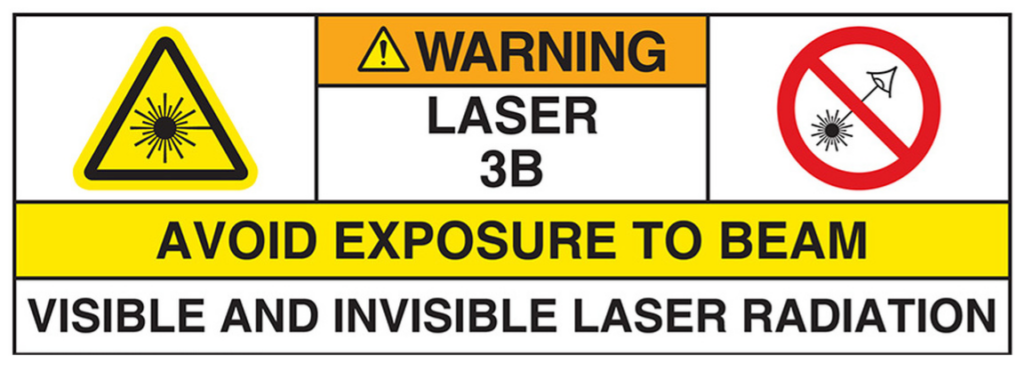
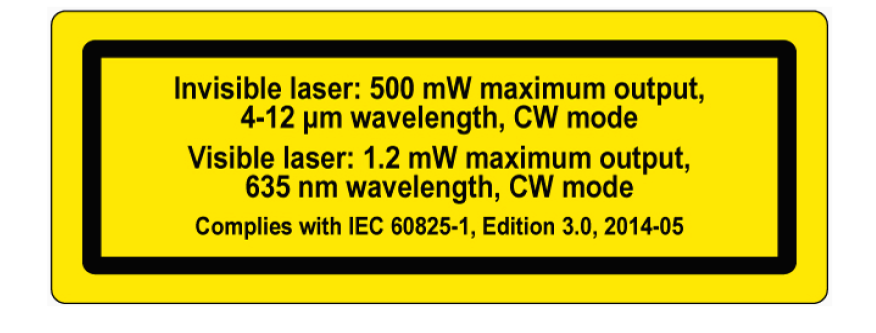
Book a personal call
Get in touch so we can discuss your needs.

